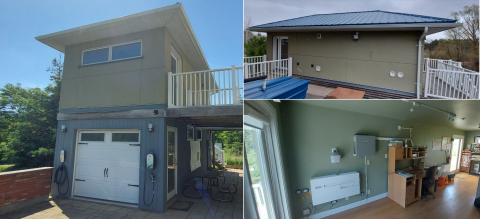Real-world Efficiency of a Monobloc Heat Pump for Multi-Unit Residential Buildings
 The Atmospheric Fund (TAF) has estimated that nearly a quarter of all multi-unit residential building (MURB) suites in Ontario are heated with electricity, primarily with electric resistance baseboards. These systems are much less efficient than other electric heating options. Their low efficiency creates high operating costs for owners and reduces the grid capacity for the electrification of other buildings and sectors.
The Atmospheric Fund (TAF) has estimated that nearly a quarter of all multi-unit residential building (MURB) suites in Ontario are heated with electricity, primarily with electric resistance baseboards. These systems are much less efficient than other electric heating options. Their low efficiency creates high operating costs for owners and reduces the grid capacity for the electrification of other buildings and sectors.
Many of these buildings also have no central cooling or have relied on window air-conditioners, but window air-conditioners are now banned in some MURBs due to the risk of them falling from the window and causing injury or death. A compounding issue is that cooling is becoming increasingly critical for the health of MURB occupants as the number of heat waves and related health impacts are on the rise.
Retrofitting electrically-heated MURBs with heat pumps is a significant opportunity to drastically decrease utility bills for owners, reduce the demand on the electricity grid, and ensure occupant well-being. This study evaluated the heating efficiency of a new monobloc air-source heat pump (ASHP) for MURB applications. The heat pump was installed at the MURB Test Suite of the Archetype Sustainable House (ASH), located in Vaughan, ON (pictured above). The MURB Test Suite is 300 ft2 and sits above a garage. It has a heat loss on the scale of an actual MURB suite and is used as a platform for evaluating suite-level MURB heating and cooling technologies. Using performance data collected at the MURB Test Suite during Winter 2021/2022, the ASHP efficiency was determined and used to predict the energy savings of retrofits in different cities across Canada.
